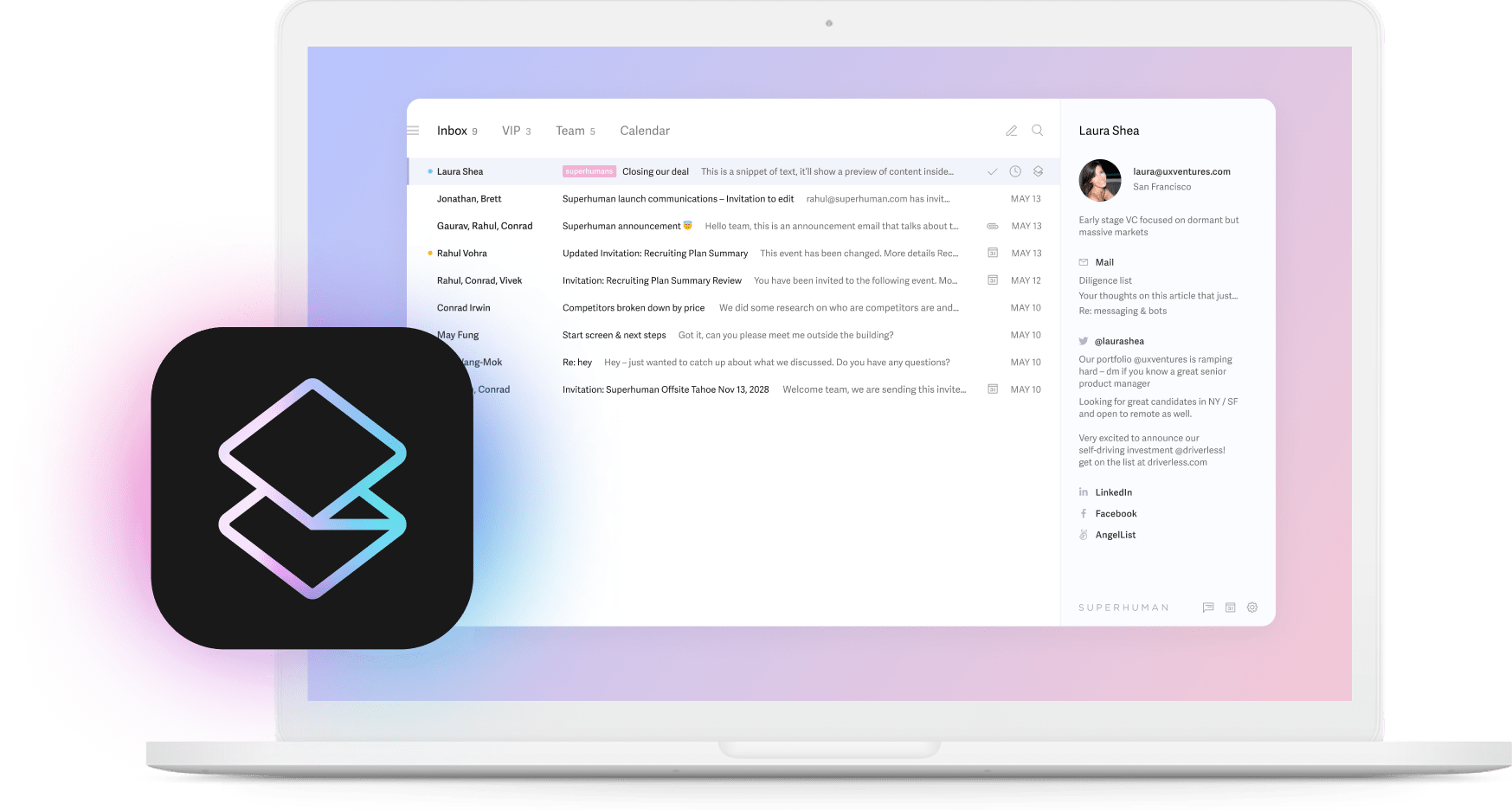
Automating workflows has shifted from sci-fi fantasy to an everyday reality that's saving our sanity one tedious task at a time. Think about those tasks that make you question your career choices — copying data between spreadsheets, chasing approvals, sending the same notifications over and over. Now imagine they just... happened. Without you. While you worked on something that actually requires your unique human brain.
Thanks to advanced business productivity tools, automation has become accessible to everyone.
Most B2B professionals are saving a full workday every week thanks to AI automation — that's over 50 reclaimed workdays per year. Meanwhile, our current workday looks brutal under the microscope: professionals spend over half their time drowning in email, calendar, and messaging apps.
For team leaders, automation has become essential. It allows your team to spend their genius on solving problems that actually matter rather than drowning in repetitive tasks.
Why businesses need to automate workflows now
Your team is bleeding time on tasks a robot could do, and it's costing you more than you think. That stubborn attachment to manual processes actively holds your business back in ways that show up everywhere from your balance sheet to your employee turnover rate.
The hidden costs of not automating workflows
Picture your talented team spending 16.5 hours per week just managing email. That's over 100 workdays annually of highly-paid humans organizing messages — something automation handles effortlessly. Add all the other repetitive tasks eating their days, from data entry to approvals to report generation.
Then there's the error factor. People make mistakes when they're tired, rushed, or bored with repetitive work. A single data entry error can cascade through your entire operation — wrong orders, incorrect bills, faulty reports that lead to bad decisions.
Automation allows companies to move from spot checks to 100 percent quality control, reducing error rates to nearly zero. Think about what that means: better data for decisions, fewer costly mistakes, & less time spent fixing problems.
Key indicators your business needs to automate workflows
The signs are painfully obvious:
- Simple tasks become day-long ordeals
- Projects stall for days waiting for approvals
- Reports contain so many errors they've become creative fiction
- Your strategic people spend their days pushing digital paper
- Getting anything done requires a dozen handoffs between departments
The businesses breaking away from the pack have figured something out: industry leaders are 38% more likely to use specialized tools beyond basic apps like Gmail or Outlook.
The ROI of automating workflows
The math gets compelling fast. Most B2B professionals save at least one full workday every week after implementing automation. That's 52 extra days annually your team could spend on work that actually grows your business.
Error rates plummet too. Automation increases accuracy and delivers up to 200% ROI in year one.
The hidden benefit? People actually like their jobs more when they're not doing the digital equivalent of digging ditches all day. When your team can focus on meaningful work, they stick around longer and bring their full creativity to work.
Core benefits of automating workflows
When you automate workflows, magic happens across your organization. Not the mystical kind — the practical, measurable kind that makes you wonder why you waited so long.
Increased productivity and efficiency
Automation gives your team their time back in big, beautiful chunks. The data doesn't lie: top performers using AI applications in business are 14% more productive per week than those still grinding through tasks manually. The most successful professionals use AI tools at least 5 times daily, making them 2.5x more likely to see real productivity gains.
This focuses on letting people work smarter. Imagine what your team could accomplish if they recovered several hours each day from mundane tasks.
Error reduction and quality improvement
Human errors happen — we get tired, distracted, or bored doing the same task repeatedly. Computers don't have this problem. They execute the same process with perfect consistency whether it's the first time or the thousandth.
Automation improves productivity and reduces errors. Consider that margin of improvement in your error-sensitive processes, particularly in regulated industries where mistakes can trigger audits or penalties.
Enhanced visibility and accountability
Ever wonder where that project got stuck? With automated workflows, you'll know exactly. Automated systems create digital breadcrumbs — showing you precisely where things stand, who's responsible for the next step, and where bottlenecks keep forming.
This visibility helps you spot patterns. Maybe approvals always stall with a particular department. Maybe certain types of projects consistently run into the same obstacles. With automation, these patterns emerge from the data, giving you insights to fix systemic problems.
Improved employee experience
Nobody dreams of spending their career copying data between systems or sending reminder emails. Automation frees your people from the monotony of repetitive tasks. Studies show that 60% of top performers use AI tools 5+ times daily to handle routine tasks.
Apps like Superhuman help customers save 37% more time through AI features, enabling them to send and respond to 72% more emails per hour without working harder. Automation rescues people from digital drudgery so they can focus on meaningful work.
Scalability without proportional resource increases
Growing businesses face a perpetual challenge: how to handle more work without constantly adding more people. Automation breaks this pattern by letting you scale operations without adding headcount at the same rate.
Organizations using workflow automation typically cut operational costs by 30-50% while handling greater volumes. Your business can take on more clients, more orders, or more projects without your team working nights and weekends to keep up.
Identifying automation opportunities in your organization
Finding the right automation targets requires hunting down the time-wasters draining your team's productivity and fixing them systematically.
Workflow audit framework
Start your automation treasure hunt with these steps:
- Document current processes - Map the journey of work through your organization. Who touches what? Where does information sit idle waiting for action?
- Identify repetitive tasks - Look for the work equivalent of Groundhog Day — processes that repeat the same steps in the same order.
- Measure manual effort - Calculate how many hours your team spends on each process.
- Assess error rates - Which processes generate the most mistakes?
- Evaluate business impact - Prioritize automating workflows that customers feel most directly.
Impact vs. effort evaluation matrix
Not all automation opportunities are created equal. Plot your candidates on this matrix:
- High Impact, Low Effort (Start here): Your automation goldmines — big results for minimal investment.
- High Impact, High Effort (Plan carefully): These projects require more resources but deliver substantial returns.
- Low Impact, Low Effort (Do when convenient): Easy fixes that won't transform your business but still free up time.
- Low Impact, High Effort (Skip these): These rarely justify the investment.
Common automation opportunities by department
Sales
- Lead nurturing sequences - Automated email campaigns can boost lead conversion rates by up to 58%.
- Quote generation - Stop manually creating quotes from scratch every time.
- Contract management - Accelerate closing with automated approvals and digital signatures.
Human resources
- Employee onboarding - One insurance company shrunk their onboarding process from 14 days to 14 minutes through automation.
- Time-off requests - Replace cumbersome email chains with automated approvals.
- Performance reviews - Automate scheduling, form distribution, and reminder notifications.
Finance
- Invoice processing - Automation cuts processing times by 60-70%.
- Expense reporting - Eliminate the monthly nightmare of chasing receipts and approvals.
- Budget approvals - Create automated approval workflows with different thresholds for different spending levels.
Email workflows
- Split inbox - Tools automatically surface your most important messages.
- Reminders - Never let important conversations fall through the cracks.
- Shared conversations - Keep everyone on the same page with shared email conversations.
Superhuman customers respond to emails twice as fast and one day sooner than non-users — proof that the right automation tools can dramatically improve communication efficiency.
Try SuperhumanThe step-by-step workflow automation process
Launching automation successfully means following a roadmap, not winging it. Here's how to transform your manual processes into automated workflows that work.
1. Document your current process
Start by mapping what actually happens now, not what's supposed to happen according to outdated process docs. Include:
- What kicks off the process
- Decision points where the work branches
- Manual tasks that humans currently handle
- The final outputs that matter
- Places where work regularly gets stuck
I once watched a team try to automate their approval process without documenting it first. They built a beautiful system that nobody used because it didn't match how approvals really happened.
2. Define clear automation goals
What specifically do you want automation to achieve? Good goals might include:
- Cutting process time by 50%
- Reducing errors to near-zero
- Slashing operational costs
- Boosting employee satisfaction scores
Get specific about what matters.
3. Select the right automation approach and tools
Choose tools that work with your reality. Consider:
- How well they'll connect with systems you already use
- Whether they can grow as your needs evolve
- How easily your team can learn to use them
- What support you'll get when things inevitably hiccup
- The true cost beyond just the sticker price
4. Design your implementation strategy
Decide how to roll out your automation:
Phased approach:
- Start small with one department or process
- Learn from initial deployment before expanding
- Maintain business continuity while you transition
- Build confidence through early wins
Complete overhaul:
- Makes bigger changes faster
- Prevents running parallel systems
- Requires more upfront planning
- Carries more initial risk but potentially bigger rewards
Unless you're a small organization or your current process is completely broken, the phased approach usually minimizes disruption and resistance.
5. Test and validate
Never skip the test drive. Before full deployment:
- Run pilot programs with a subset of users
- Compare results against your pre-automation metrics
- Fix any bugs or bottlenecks
- Get feedback from actual users, not just process designers
6. Implement training and change management
The human side makes or breaks your automation project. Effective change management includes:
- Showing people what's in it for them, not just the company
- Training thoroughly on new systems
- Addressing fears about job security honestly
- Finding champions who genuinely believe in the new approach
- Creating ways for users to share feedback and improvement ideas
The best automation fails if people won't use it.
7. Measure success and refine
After launch, track how your automation performs against your goals:
- Are processes completing faster?
- Have errors decreased?
- Are you seeing the cost savings you projected?
- Do employees report higher satisfaction?
- Has customer experience improved?
Use these insights to continuously improve your automation. The first version is rarely perfect — plan for ongoing refinement.
Building an automation-first culture
Success with automation comes from building a culture where everyone constantly asks, "Could this be automated?" rather than just implementing random tools.
The most effective approach involves asking your team to identify their pain points. They know exactly where the tedious work hides: the approvals that vanish into email black holes, the reports rebuilt from scratch every month, the data manually copied between systems. When you tap into this knowledge, you unlock efficiency opportunities that have been hiding in plain sight.
Contrary to common fears, automation enhances rather than threatens jobs. It creates space for the work only humans can do well: creative problem-solving, relationship building, and strategic thinking.
Industry-leading companies are 3x more likely to have seen significant productivity increases from implementing AI solutions. Executives particularly recognize this potential, with many predicting 10x productivity jumps in the coming years.
As one savvy leader put it: "AI isn't replacing jobs — it's replacing professionals who don't use it." The competitive advantage now belongs to organizations that embrace these tools as partners that handle routine tasks, allowing humans to focus on work that truly matters.






